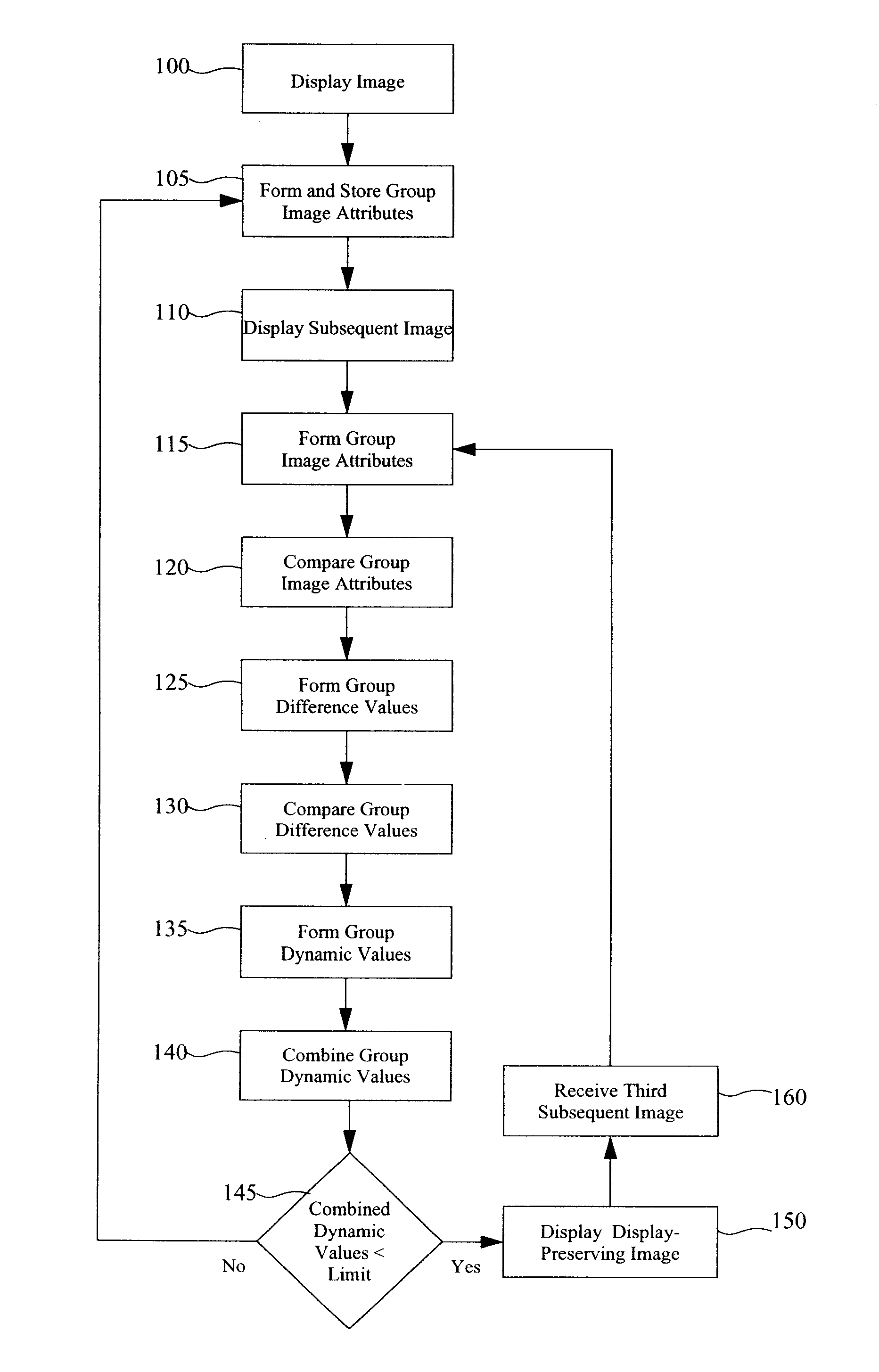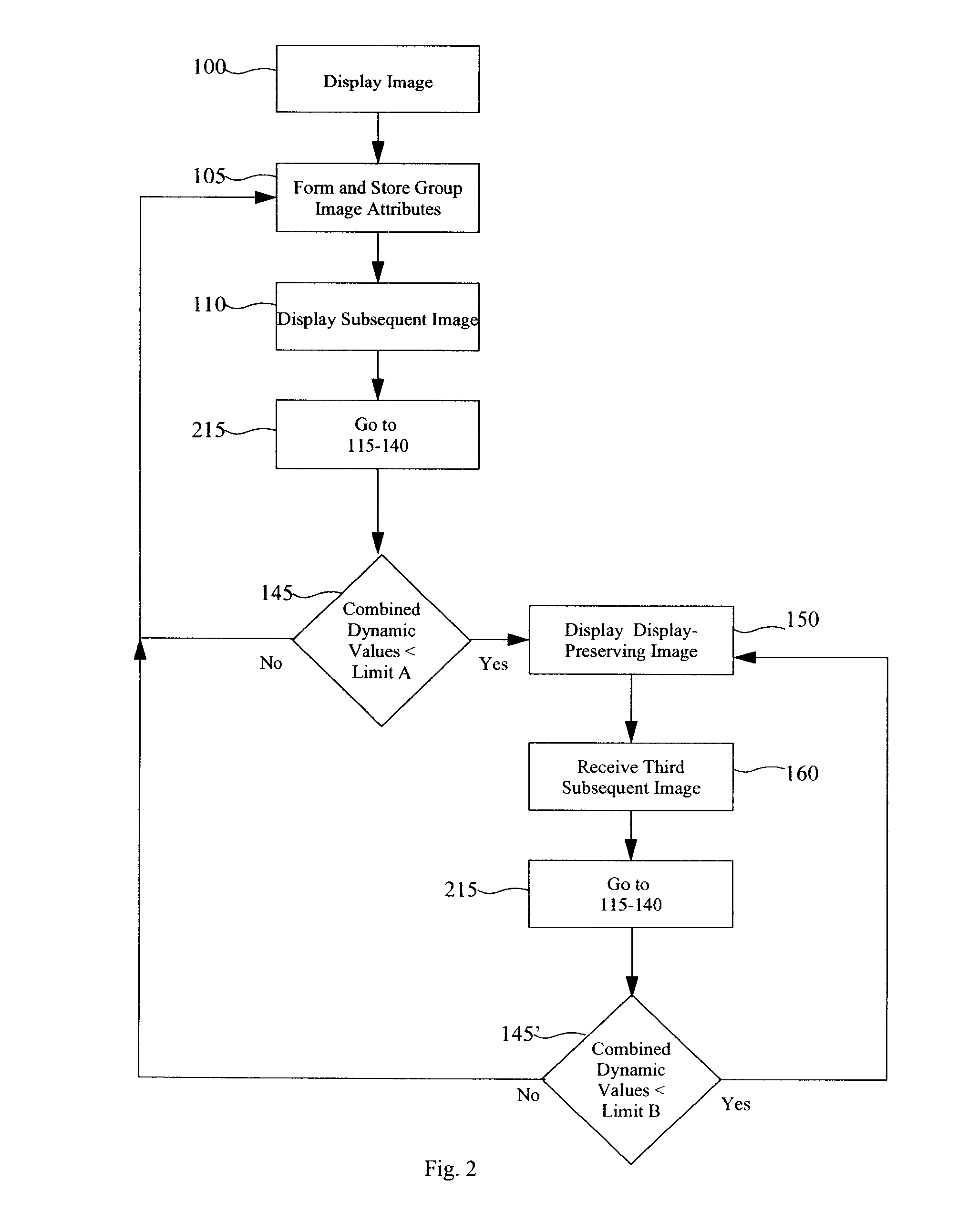Method for driving display with reduced aging
a technology of display device and display, applied in the direction of static indicating device, discharge tube luminescnet screen, instruments, etc., can solve the problems of differential color aging, light-emitting element change, display life reduction, etc., and achieve the effect of reducing display aging
- Summary
- Abstract
- Description
- Claims
- Application Information
AI Technical Summary
Problems solved by technology
Method used
Image
Examples
Embodiment Construction
[0016] Referring to FIG. 1, a method of driving a display having a plurality of light-emitting elements that change with time or use, comprises the steps of displaying 100 a first image signal having spatially distributed pixels divided into a plurality of groups, each pixel group comprising more than one spatially neighboring pixel, and forming and storing 105 one or more first image signal group attributes for each of the plurality of pixel groups; displaying 110 a subsequent second image signal having spatially distributed pixels divided into the plurality of groups and forming 115 one or more subsequent second image signal group attributes for each of the plurality of pixel groups; comparing 120 the subsequent second group attributes and the stored first group attributes to form 125 at least one group difference value for each pixel group, comparing 130 the group difference values to at least one predetermined metric to form 135 at least one pixel group dynamic value, combining ...
PUM
 Login to View More
Login to View More Abstract
Description
Claims
Application Information
 Login to View More
Login to View More - R&D
- Intellectual Property
- Life Sciences
- Materials
- Tech Scout
- Unparalleled Data Quality
- Higher Quality Content
- 60% Fewer Hallucinations
Browse by: Latest US Patents, China's latest patents, Technical Efficacy Thesaurus, Application Domain, Technology Topic, Popular Technical Reports.
© 2025 PatSnap. All rights reserved.Legal|Privacy policy|Modern Slavery Act Transparency Statement|Sitemap|About US| Contact US: help@patsnap.com



